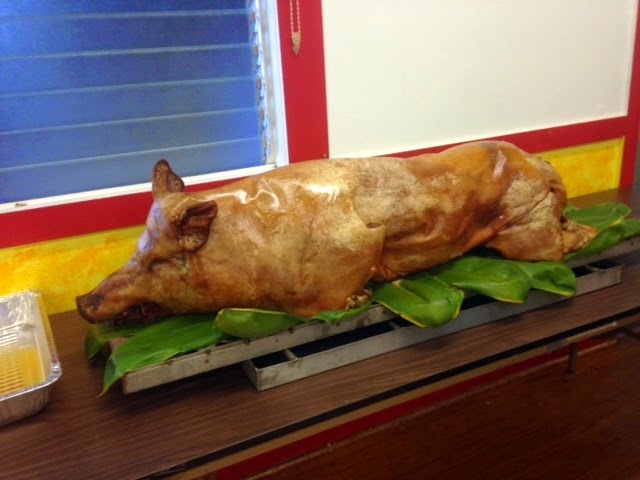Less
than 2 miles north of the entrance to Mauna Kea Beach Hotel you will come to a T-intersection.
Directly in front of you is the Kohala Volcano. The road you are facing was built
along the dividing line between the lava flows of Mauna Kea behind you and the
lava flows of Kohala in front of you. Route 19 turns the right leading up to
the town of Waimea. However, if
you turn left, you will be on Route 270 which goes along the western flank of
Kohala. About a half mile from the intersection, there is a road to the makai side which leads to Puʻu Koholā Heiau.
In
about 1790, Kamehameha the ruler of the west side of the island
received a prophecy which said that if he built a spectacular heiau (temple) to the war god, Kūkaʻilimoku, he would be the one who would
unite all of the Hawaiian Islands. He set out to build such a heiau. The rocks
for the structure had to come from the other side of Kohala volcano. He lined up his army across the top
of the mountain and had them pass the rocks from one to the other all the way
across the mountain. Imagine this line of warriors passing rocks from one
person to the next in rapid succession. If a rock was dropped, it was not
retrieved because the next rock was on its way. When the heiau was completed it
needed to be dedicated with a formal ceremony. Kamehameha invited his rival
from the east side of the island, Keōua, to the ceremony. Keōua had
recently been defeated by Kamehameha’s army and his own army decimated. He knew
that if he went to the dedication, he would be killed. Having few men left in
his army, Keōua sailed up the west coast of the island knowing what his fate
would be. So he prepared himself spiritually, mentally, and physically to
accept his fate: spiritually by communing with the gods regarding his fate,
mentally by accepting the fact that he would die, and physically by cutting off
his reproductive organ. As he stepped out of his canoe in the bay below the
heiau, Kamehameha’s advisers killed him and he was sacrificed at the temple.
Kamehameha then proceeded to conquer Maui and Oahu, but was thwarted by storms and
illness in his attempts to land a force on Kauaʻi. By 1815, the prophecy had been
fulfilled when the chief of Kauaʻi arranged a peace treaty with Kamehameha.
Kamehameha was now the ruler of all Hawaiʻi.
Kamehameha had an advantage in his conquest of the other
islands. Two ships had been pillaging the island people. On one, the Fair
American, a local chief was beaten. In retaliation Kamehameha killed all the
crew, except for the ship’s master, Isaac Davis, and took their weapons. The
other ship, the Eleanor, entered Kealakekua Bay to the south and while some crew members were
ashore, one of the crew, John Young, was captured. These two men
provided Kamehameha with the knowledge of weaponry and the ability to mount the
weaponry on his canoes. They became trusted allies; John Young even married
into the royal family. Thus, Kamehameha had a distinct advantage over the
chiefs of the other islands. The foundation of a house provided for John Young
is on the mauka side of the highway, but is now not readily
accessible.
There
are actually three heiau at this site. The upper one, Puʻu Koholā or Hill of the Whale, was built by Kamehameha. The one below it, Mailekini, was already on the site. There
is also a third heiau in the bay which is referred to as a shark heiau. It was
there that enemies were sacrificed to the sharks. There is a stone overlooking
the bay which is supposedly where the Kahuna (heiau priest) would rest to watch the
sacrifice.

